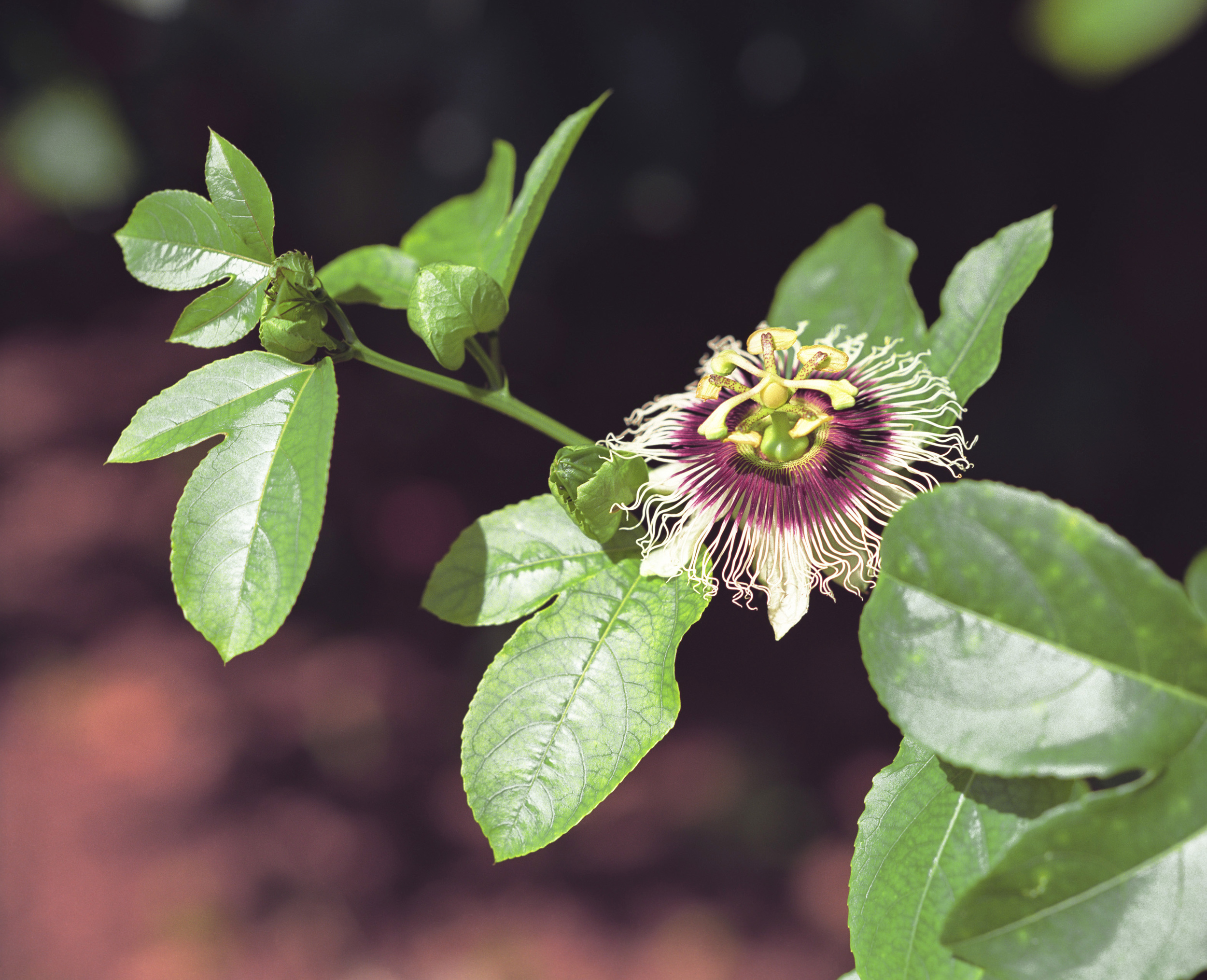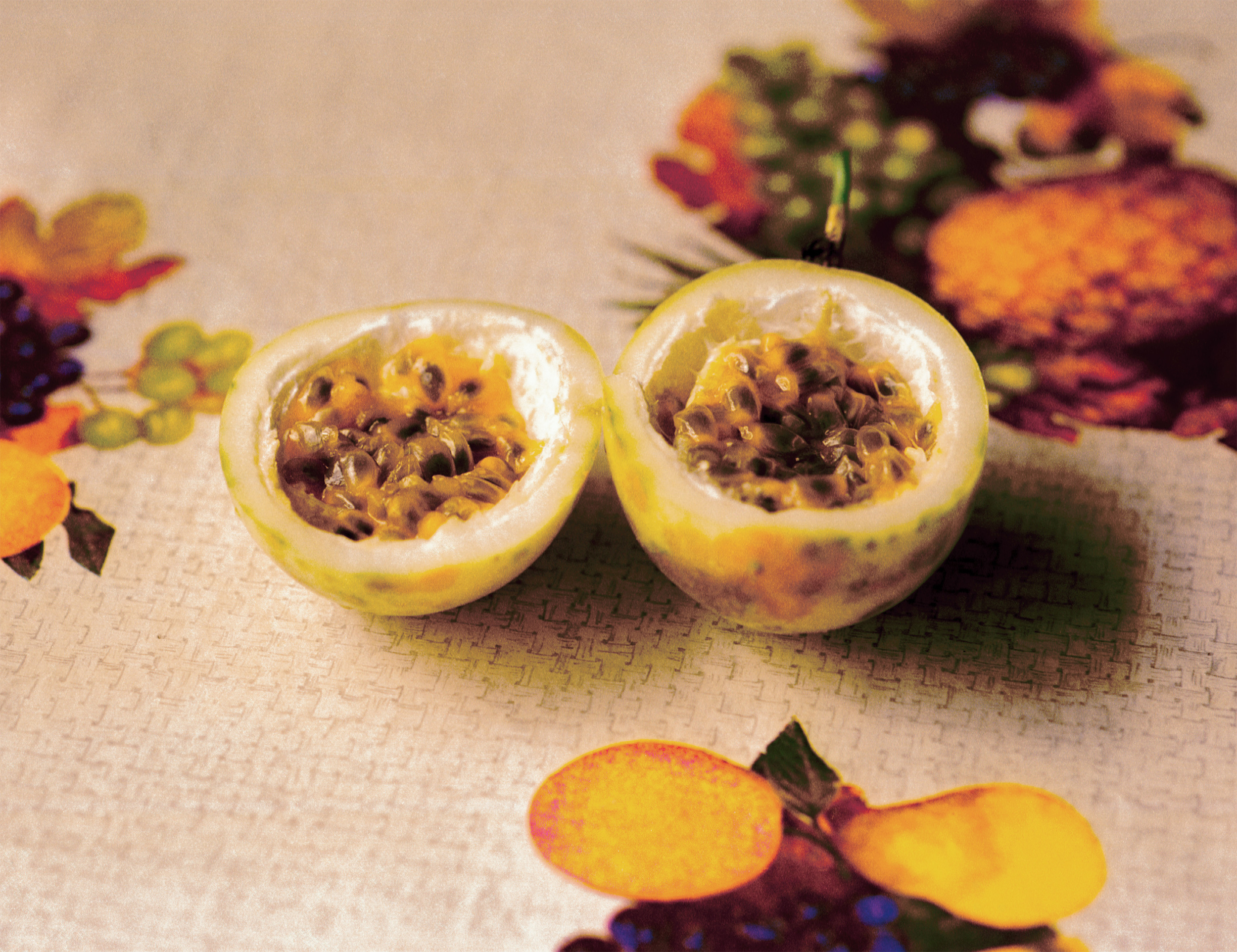The Forbidden Fruit


Passing the stables, among other crawling bushes along the fence, I found the tree of the knowledge of good and evil. The famous forbidden fruit, the same one that brought Eve to the fatal act of disobedience looked just like any other harmless fruit of the garden.
When Antonio de León Pinelo established that the forbidden fruit was the maraca (1), no one in the New World dared to doubt it: the fruit has the most persuasive and seductive smell of the tropics. Many believed the flower of the plant held an enigmatic message encrypted in its forms. The name of the fruit comes from its flower, (the Pasionaria) which symbolizes the passion Christ suffered on the cross. The flower, endowed with the three nails of the crucifixion and the crown of thorns, was in itself a sign of redemption, illustrating in anticipation the forgiveness that all sinners would encounter with the arrival of Christ. In the seventeenth century, the didactic wisdom of nature often asserted the path of Christianity.
Absorbed in the contemplation of the flower (like Funes (2) smoking a cigarette), I found myself lost in the mystery of its forms, suddenly drifting through the obscure hallways of the unconscious. There I saw the long-forgotten design of human destiny and every form of knowledge we had accumulated through the ages carefully woven in the shapes of the flower. There it was, the Platonic archetype of humanity erected on the stamen of the flower. He was Christ and also Adam, still wearing the fig leaf from the expulsion and the crown of thorns from the crucifixion. These two men, the only ones who ever saw the face of God the father in the flesh, were one man and that man spoke in the truest of all languages (3).
He started reciting the Encyclopedia Britannica as if it were an opera. At a crucial passage of the recital, the first sinner incarnated in the last redeemer looked up and opened his arms to the heavens. A bright light beam from above reached his forehead as the enormous flower begun to rotate. It was a utopian scene shining with mirrors, velvet and water springs, full of women combing their hair and following the melody with the gentle movement of their legs like in a synchronized swimming set from an Esther Williams' film. As far as I remember, fireworks were seen and heard everywhere.
I think of kitsch in terms of temptation. It is so ubiquitous that one more try could not hurt its chances... Yet on days like this one, I come to believe the lethal combination of allegory and kitsch is still beyond redemption. Since it is found everywhere, it should be resisted at any cost. It should remain the most forbidden fruit of all.
NOTES
1. Passion fruit
2. Ireneo Funes, character in the short story by Jorge Luis Borges titled Funes the memorious. The first paragraph reads: "I remember him (I have no right to utter this sacred verb, only one man on earth had that right and he is dead) with a dark passion flower in his hand, seeing it as no one has ever seen it, though he might look at it from the twilight of dawn till that of evening, a whole lifetime. I remember him, with his face taciturn and Indian-like and singularly remote, behind the cigarette". Translated by James E. Irby, copyright 1962, 1964 by New Directions Publishing Corporation.
3. The author refers to the mother of all tongues spoken in earthly paradise. See Umberto Eco: The search for the perfect language (the making of Europe), Fontana Press, London, 1997.
























